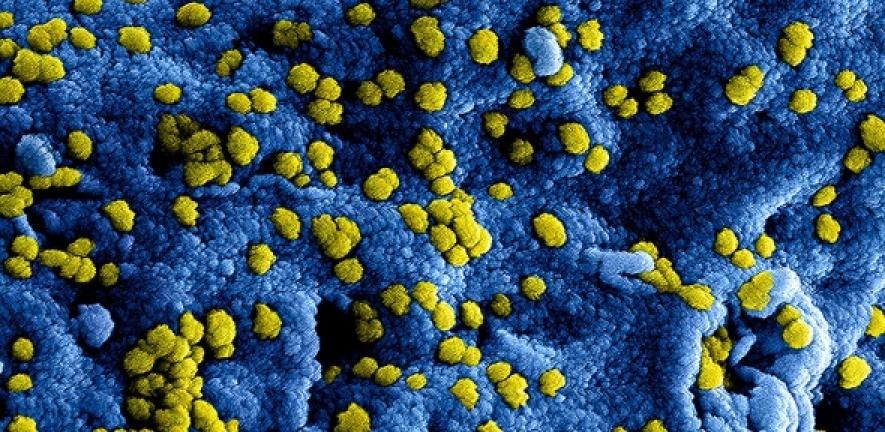
The strategy is published this week in a paper in the Proceedings of the National Academy of Sciences. It is co-authored by Daan Frenkel, an Emeritus Professor of this department, and several of his current and former students and collaborators.
Research for the paper on 'Computational design of probes to detect bacterial genomes by multivalent binding' was originally initiated and coordinated by Rosalind Allen (who completed her PhD in this department with Jean-Pierre Hansen in Cambridge and is a now a Professor of Biological Physics at the University of Edinburgh). It was carried out with a view to developing more rapid detection methods for distinguishing viral and bacterial infections.
But the new strategy for probing pathogens – by designing DNA probes that bind multivalently to the pathogenic DNA – could also be exploited to develop new tests for viral infections like COVID-19.
Currently, distinguishing viral and bacterial infections is usually done by using a complementary DNA sequence that binds selectively to the genome of the pathogen of interest. Normally, this is done by targeting one or two long DNA sequences that are unique to the pathogen.
However, the researchers believe that much higher selectivities can be achieved by simultaneously targeting many shorter sequences that occur with a higher frequency in the pathogen of interest than in the DNA of other organisms that may be present in the patient samples.
Co-author Professor Erika Eiser from Cambridge’s Cavendish Laboratory and her group did proof-of-principle experiments on a system of viral DNA and colloids coated with short strands of complementary DNA. This work inspired the further development of the approach.
 Professor Daan Frenkel says: "Taking the information from Erika’s work, and combining this with work we conducted in 2011 on multivalent binding with my then postdoctoral research associate Francisco Martinez, we had the idea to do this not by focusing on one DNA sequence, but by using dozens of more weakly binding different sequences that occurred in many places of the pathogenic genome."
Professor Daan Frenkel says: "Taking the information from Erika’s work, and combining this with work we conducted in 2011 on multivalent binding with my then postdoctoral research associate Francisco Martinez, we had the idea to do this not by focusing on one DNA sequence, but by using dozens of more weakly binding different sequences that occurred in many places of the pathogenic genome."
He adds: "My then PhD student Tine Curk considered the genome of a large number of organisms – both viral particles and the genomes of bacteria – and used computational methods to see which short DNA sequences would give us the best ability to distinguish whether the pathogen was a virus or a bacteria, and even to distinguish between two different closely related bacteria."
"Tine also ran a comparison to see what worked better – using a single long strand of DNA, or using the method we proposed of using a number of short sequences. And he found that in many cases the method we proposed should work much better."
The current coronavirus pandemic highlights the need for fast and accurate detection of viral infections like coronavirus – and preferably one that is simpler than the current procedure that uses the Polymerase Chain Reaction. [This is a technology that locates a particular coronavirus gene sequence and creates multiple copies that can then be easily detected.] At the same time, it remains urgent to distinguish bacterial infections like those associated with antimicrobial resistance.
"I’m optimistic," says Daan, "that people might pick up our message. I don’t blame them for not taking up our 2011 research when it was only a generic theoretical concept. But now we can see a specific application for this work, and it is much clearer what could be achieved if the computer models are borne out by experimentation with real mixtures of pathogenic and non-pathogenic DNA.
"So I really hope it will stimulate people to want to take this idea forward."

